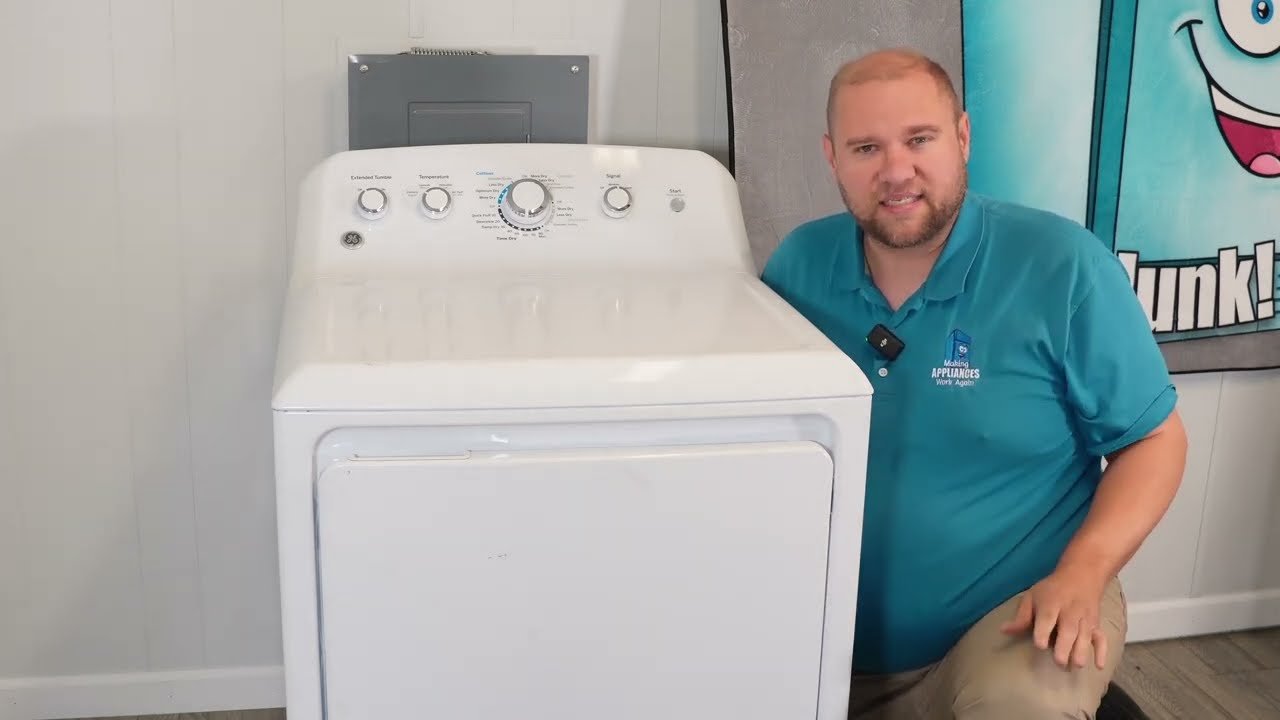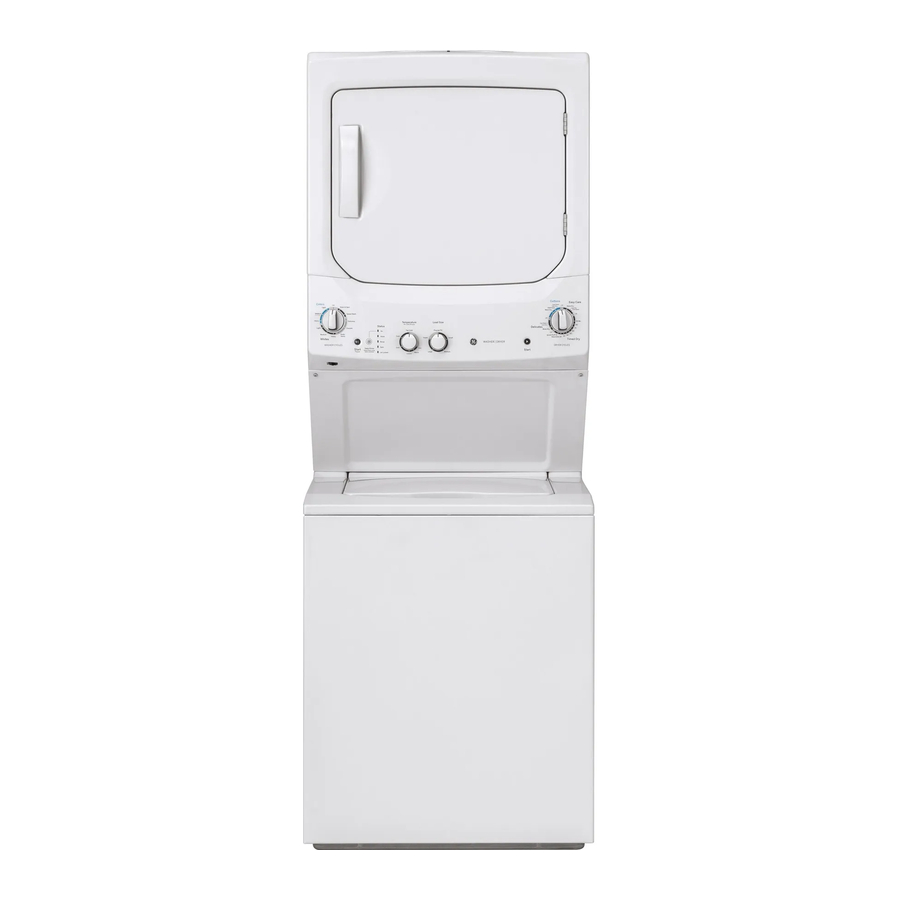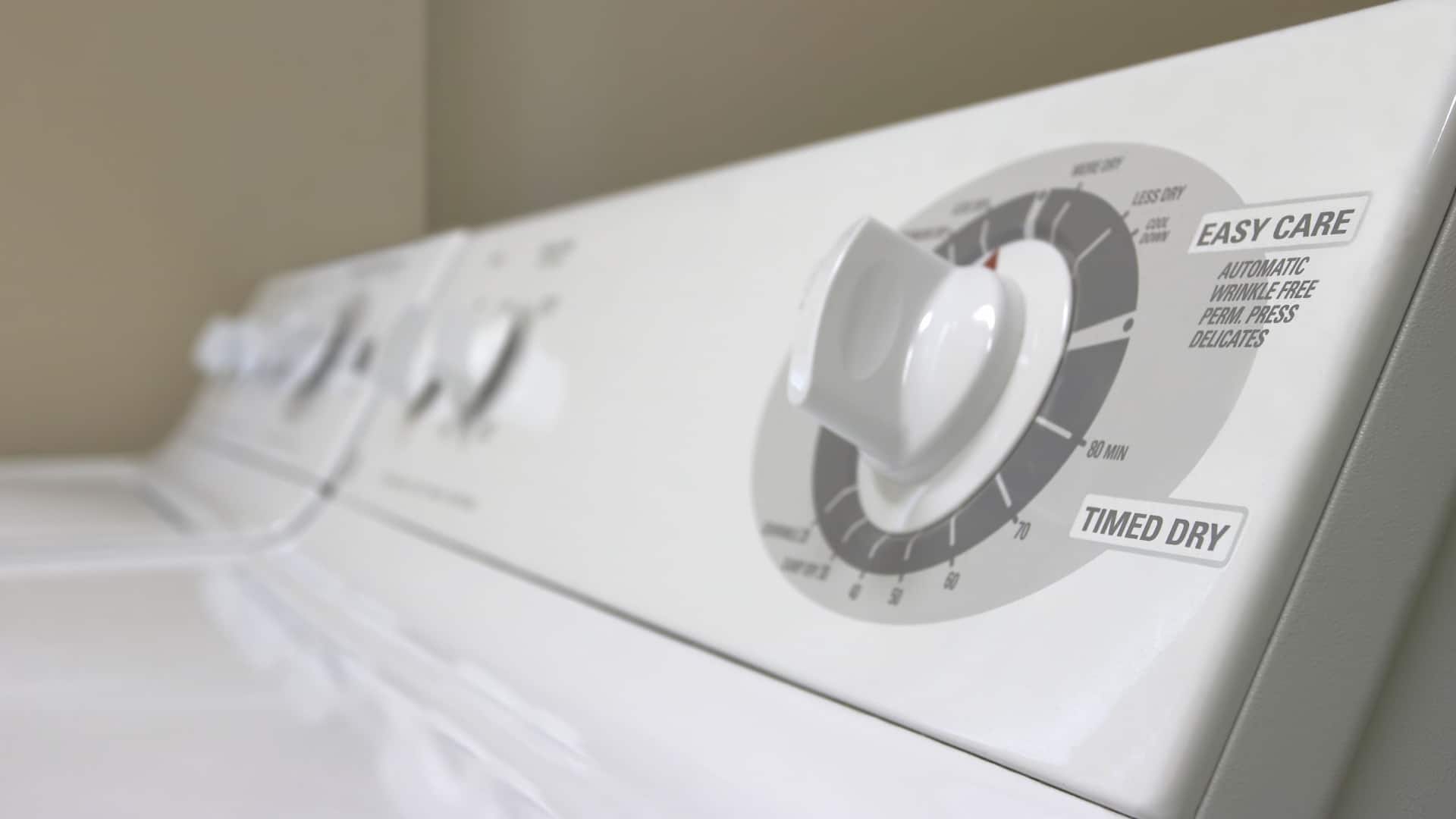
Having trouble with your GE dryer? You’re not alone.
Many people face issues with their dryers. GE dryers are reliable, but like all appliances, they can develop problems. Understanding common issues and their fixes can save you time and money. Whether your dryer isn’t heating, making strange noises, or not starting, knowing how to troubleshoot can help.
This guide will walk you through simple steps to diagnose and fix common GE dryer problems. Let’s get your dryer working again without the hassle of calling a technician. Stay tuned for easy-to-follow tips and solutions.

Credit: alumni.ulab.edu.bd
Ge Dryer Not Starting
Is your GE dryer not starting? This issue can be frustrating. Before calling for repairs, you can troubleshoot the problem yourself. A few basic checks may reveal the cause. Here are some steps to help you get your dryer running again.
Power Supply Check
First, ensure the dryer is plugged into the power outlet. Sometimes, the plug can become loose. Check the outlet by plugging in another device. If that device works, the outlet is fine. If not, you may have a power issue.
Also, check the circuit breaker. Locate the breaker panel in your home. Find the switch for the dryer. If the switch is off, turn it back on. This may solve the problem. Lastly, verify that the dryer’s power cord is not damaged. A damaged cord can prevent the dryer from starting.
Door Switch Inspection
The dryer has a door switch that must be engaged for it to start. Open the dryer door and locate the switch. Press it with your finger. Listen for a clicking sound. If you do not hear a click, the switch may be faulty.
Sometimes, lint and debris can block the switch. Clean around the switch and try again. If the switch still does not click, it may need replacement. You can find replacement switches at appliance stores or online.
By following these steps, you can often identify the problem yourself. This can save you time and money. If the dryer still does not start, professional help may be needed.

Credit: academy.fredsappliance.com
Ge Dryer Not Heating
Is your GE dryer not heating? This is a common issue that can be frustrating, especially when you have a pile of laundry waiting. Don’t worry, though. You can troubleshoot and fix many heating problems on your own. Let’s dive into some practical steps you can take to get your dryer back in action.
Thermal Fuse Replacement
A thermal fuse is a safety device that protects your dryer from overheating. If the thermal fuse blows, your dryer won’t heat. Start by unplugging your dryer. Safety first!
Next, locate the thermal fuse. It’s typically found on the blower housing or at the dryer’s heat source. You may need to remove the back panel to access it. Use a multimeter to test the fuse for continuity. If there’s no continuity, you need a replacement.
Replacing a thermal fuse is straightforward. Disconnect the old fuse and install the new one. Make sure it’s securely connected. Plug your dryer back in and test it. Do you feel the heat? If so, you’ve successfully fixed the issue!
Heating Element Test
If the thermal fuse is intact, the heating element might be the culprit. The heating element warms the air inside the dryer. If it’s faulty, your dryer won’t heat.
First, unplug the dryer. Safety is a priority. Locate the heating element, usually at the back of the dryer. You may need to remove the back panel. Use a multimeter to test the heating element for continuity. If there’s no continuity, it’s time for a new heating element.
Replacing the heating element is a bit more involved. Remove the old element and install the new one. Ensure all connections are secure. Once replaced, plug your dryer back in. Is it heating up now? Great job! You’ve tackled the issue like a pro.
By following these steps, you can troubleshoot and fix common heating issues with your GE dryer. Have you had any unexpected dryer problems? How did you resolve them? Share your experiences and tips in the comments. Let’s help each other keep our dryers running smoothly!
Ge Dryer Making Noise
Is your GE dryer making strange noises? Whether it’s a loud thumping, a high-pitched squeal, or a rattling sound, it can be quite alarming. But don’t worry, these noises often have simple explanations and fixes. Let’s dive into some practical steps to troubleshoot your noisy GE dryer.
Drum Roller Examination
One common culprit behind a noisy dryer is worn-out drum rollers. These small wheels support the drum and help it spin smoothly. Over time, they can wear out, leading to a thumping or rumbling noise.
To check the drum rollers, unplug your dryer and remove the front or back panel. Look for the rollers around the drum. If they appear worn or damaged, it’s time to replace them.
Replacing drum rollers is straightforward. Just remove the old ones and pop in the new ones. You can find replacement rollers at most appliance stores or online. Make sure to follow the instructions carefully to ensure a proper fit.
Belt Inspection
The dryer belt is another part that can cause noise issues. This belt wraps around the drum and motor, helping to turn the drum. If the belt is frayed or broken, it can create a squealing or buzzing sound.
Start by unplugging your dryer and removing the necessary panels to access the belt. Check its condition thoroughly. If you notice any signs of wear, such as cracks or fraying, you need to replace it.
Replacing a dryer belt might seem daunting, but it’s doable with a little patience. You’ll need to thread the new belt around the drum and motor. Follow a step-by-step guide or video to ensure you do it correctly.
Have you ever fixed a noisy dryer? What tips would you share with others facing this issue? Troubleshooting your GE dryer can be a satisfying DIY project. Plus, it saves you the cost of hiring a technician. Happy fixing!
Ge Dryer Not Drying Clothes
Having issues with your GE dryer not drying clothes? This frustrating problem can leave you with damp laundry and a sense of bewilderment. But don’t worry, there are a few common culprits that might be causing this issue. Let’s dive into some practical troubleshooting steps.
Vent Cleaning
One of the first things you should check is the dryer vent. If the vent is clogged, your dryer can’t expel hot air efficiently, which prevents your clothes from drying properly.
Inspect the vent for any blockages. You might find lint buildup or other debris that needs to be cleared out.
Consider using a vent cleaning brush or a vacuum attachment specifically designed for dryer vents. Regular cleaning can prevent this issue from recurring.
Sensor Check
Your GE dryer is equipped with moisture sensors that detect whether clothes are dry. If these sensors malfunction, they might not accurately measure the moisture levels.
Locate the sensors inside the dryer drum. Usually, they are near the lint filter or drum back.
Gently clean the sensors with a damp cloth to remove any residue. If your clothes still aren’t drying, the sensors might need professional inspection.
Have you ever cleaned your dryer vent or checked the sensors? If not, now’s the time to give it a try. These simple steps can save you from the hassle of damp laundry and extend the life of your dryer.
Regular maintenance is key to ensuring your dryer works efficiently. What other steps do you take to keep your appliances in top shape?
Ge Dryer Overheating
Experiencing issues with your Ge dryer overheating? This problem can be both frustrating and concerning. Overheating can damage clothes and pose safety risks. Understanding the causes and solutions can help you fix it. Let’s delve into some common reasons behind this issue and how you can troubleshoot it effectively.
Thermostat Check
The thermostat in your dryer regulates its temperature. If the thermostat is faulty, it may not shut off when it should. This can cause the dryer to overheat. To check the thermostat, you need a multimeter. Disconnect the power before starting. Remove the back panel of the dryer. Locate the thermostat and test it with the multimeter. If it shows no continuity, replace it.
Ventilation Assessment
Proper ventilation is crucial for your dryer’s performance. Blocked vents can lead to overheating. Check the vent hose for any blockages. Clean out any lint or debris. Ensure the vent hose is not kinked. Also, inspect the outside vent. Make sure it opens and closes properly. Good airflow prevents overheating and ensures efficient drying.
Ge Dryer Shutting Off Mid-cycle
Having your GE dryer shut off mid-cycle can be frustrating. It disrupts your laundry routine and leaves clothes damp. Understanding the reasons behind this issue can help you fix it quickly. Here, we will discuss two common causes: motor problems and control board issues.
Motor Inspection
The dryer motor is crucial for operation. If the motor overheats, it may shut off mid-cycle. Check if the motor is clean and free of lint. Lint buildup can cause the motor to overheat. Inspect the motor for signs of wear or damage. If the motor is faulty, it may need replacement.
Listen for unusual noises from the motor. Grinding or buzzing sounds indicate problems. Ensure the motor’s cooling vents are not blocked. Proper airflow prevents overheating. Regular maintenance helps keep the motor in good condition.
Control Board Check
The control board manages the dryer’s functions. If it malfunctions, the dryer may shut off unexpectedly. Inspect the control board for burnt or damaged components. A visual inspection can reveal obvious issues.
Check the wiring connections to the control board. Loose or damaged wires can cause power interruptions. Ensure all connections are secure. If the control board is faulty, it may require professional repair or replacement.
Resetting the control board can sometimes solve minor issues. Unplug the dryer for a few minutes and then plug it back in. This can reset the control board and restore normal operation.
Ge Dryer Drum Not Turning
Is your GE dryer drum not turning? This issue can be frustrating and can interrupt your laundry routine. Don’t worry; many homeowners have faced this problem, and there are practical solutions. Let’s break down the steps to get your dryer back in action.
Belt Replacement
One common reason your dryer drum might not be turning is a broken or worn-out belt. The belt wraps around the drum and motor pulley, enabling the drum to spin.
First, unplug your dryer. Safety comes first. Next, remove the dryer’s top panel and locate the belt. If you notice any fraying or breakage, it’s time for a replacement.
Replacement belts are available at most hardware stores. Ensure you buy one that matches your dryer model. Follow the instructions in the manual or online guides to replace the belt.
Motor Coupling Check
If the belt is intact, the issue might lie with the motor coupling. This coupling connects the motor to the drum and can wear out over time.
Access the motor coupling by removing the back panel of your dryer. Look for any signs of damage or wear. If the coupling looks worn, it needs to be replaced.
Replacing the motor coupling is straightforward. Secure the new coupling onto the motor and drum. Ensure all connections are tight and secure.
Regular maintenance can prevent these issues. Inspect your dryer components periodically to catch problems early.
Have you encountered this issue before? What steps did you take to resolve it? Share your experiences in the comments below!

Credit: www.youtube.com
Ge Dryer Error Codes
Ge Dryer error codes help identify issues quickly. These codes guide troubleshooting, making it easier to fix common dryer problems. Understanding them ensures efficient repairs and maintenance.
If you own a GE dryer, encountering error codes can be confusing. These error codes are designed to help you troubleshoot and resolve issues quickly. Understanding what these codes mean can save you time and possibly a service call.Understanding Error Codes
Error codes are your dryer’s way of communicating problems. For instance, you might see codes like E1 or E3 displayed on the control panel. E1 usually indicates a problem with the thermistor, which is a sensor that detects temperature. E3 often points to an issue with the dryer’s blower motor. Knowing these codes can help you diagnose the problem. It’s like your dryer is speaking a secret language, and once you understand it, you can take action.Reset Procedures
Sometimes, the simplest solution is to reset your dryer. Unplug the dryer from the power source. Wait for about one minute. After plugging it back in, check if the error code has disappeared. This can resolve minor glitches and get your dryer working again. If the code persists, it might be time to consult the user manual or contact GE customer service. This step ensures you’re not overlooking a more significant issue. Understanding your dryer’s error codes can make maintenance easier. It also empowers you to address problems efficiently. Have you ever resolved an appliance issue by understanding its error code? Share your experience in the comments!Frequently Asked Questions
How Do You Reset A Ge Dryer?
To reset a GE dryer, unplug it from the power source. Wait for 30 seconds. Plug it back in and restart the dryer.
What Is The Most Common Dryer Failure?
The most common dryer failure is a broken thermal fuse. This issue often causes the dryer to stop heating.
What Would Cause A Ge Dryer Not To Start?
Common causes include a tripped breaker, faulty door switch, blown thermal fuse, bad start switch, or a malfunctioning timer.
How Do I Run Diagnostics On My Ge Dryer?
To run diagnostics on your GE dryer, unplug it and plug it back in. Within 30 seconds, press Signal, Delay Start, Signal, and Delay Start. Follow the prompts on the display to test the dryer’s functions.
Conclusion
Troubleshooting your GE dryer can save time and money. Follow the steps provided to identify common issues. Check connections, vents, and settings regularly. Simple maintenance can prevent bigger problems. Consult your manual for specific guidance. Contact a professional for complex repairs.
Keeping your dryer in good shape extends its life. Enjoy hassle-free laundry days with these tips.






